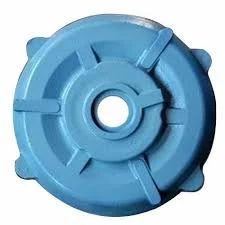Mobile:+86-311-808-126-83
Email:info@ydcastings.com
Exploring Different Techniques in Die Casting for Effective Manufacturing Solutions
Die Casting Methods An Overview
Die casting is a manufacturing process that involves forcing molten metal into a mold cavity under high pressure. This method is widely used for producing complex shapes with high precision and excellent surface finish. It is particularly advantageous for high-volume production, as it allows for relatively quick cycle times and consistent product quality. In this article, we will explore the various die casting methods, their applications, benefits, and considerations.
Types of Die Casting Methods
There are two primary types of die casting methods hot chamber die casting and cold chamber die casting. Each method has its unique set of characteristics, making it suitable for different applications.
1. Hot Chamber Die Casting
In hot chamber die casting, the melting furnace is directly attached to the die casting machine. The molten metal is fed into the chamber where a piston forces it into the mold cavity under high pressure. This method is typically used for non-ferrous metals with low melting points, such as zinc, lead, and magnesium.
Advantages
- High Efficiency The process is fast since the metal is already molten, reducing cycle time. - Good Surface Finish Parts produced have a smooth surface, often requiring little to no machining. - Complex Shapes Allows for intricate designs with fine details.
Disadvantages
- Material Limitations Not suitable for metals with high melting points like aluminum or copper. - Contamination Risk The furnace and the die casting machine are in close proximity, increasing the risk of contamination.
Cold chamber die casting is employed for metals with higher melting points, such as aluminum and copper. In this method, the molten metal is poured manually or automatically into a cold chamber before being injected into the mold under pressure.
Advantages
die casting methods

- Versatile Material Use Suitable for a broader range of metals, including those with high melting points. - Reduced Contamination The metal does not remain in the machine during the melting process, minimizing contamination.
Disadvantages
- Longer Cycle Time The need to heat the metal separately increases the overall cycle duration. - More Complex Equipment Requires additional mechanisms for melting and transferring the metal.
Applications of Die Casting
Die casting is employed across various industries, including
1. Automotive Industry Producing engine components, transmission cases, and structural parts. 2. Electronics Manufacturing housings, connectors, and heat sinks. 3. Consumer Goods Creating items like toys, tools, and household appliances. 4. Aerospace Producing lightweight components while maintaining strength and durability.
Benefits of Die Casting
- High Precision and Tolerance The process produces parts with tight tolerances, ensuring reliability in critical applications. - Cost-Effective for High Volume While the initial setup cost can be high, die casting becomes economically advantageous with large production runs. - Reduced Waste Most of the metal is used in the final product, leading to minimal scrap.
Considerations for Die Casting
While die casting offers numerous advantages, there are key considerations to keep in mind
- Initial Setup Cost The cost of dies can be significant, making die casting less ideal for low-volume production. - Design Constraints Some designs may be challenging to execute due to draft angles and complex shapes, necessitating careful planning. - Post-Processing Needs While die casting often leads to fine surface finishes, some applications may still require additional machining or surface treatment.
Conclusion
Die casting is a versatile and efficient manufacturing process suited for producing high-quality metal components across various industries. Understanding the differences between hot chamber and cold chamber die casting can help manufacturers choose the best method for their specific needs. As technology advances, we can expect further improvements in die casting techniques, ultimately enhancing production efficiency and product quality. This makes die casting an enduring choice in the realm of metal fabrication.
-
Impeller Technology That Powers Precision in Pump SystemsNewsMay.22,2025
-
Valve Durability Begins with Quality Cast Iron ComponentsNewsMay.22,2025
-
Performance Cooling with Advanced Automobile Water Pump SolutionsNewsMay.22,2025
-
How Motor Housing and Oil Pans Shape Engine PerformanceNewsMay.22,2025
-
How Metal Castings Drive Modern Manufacturing EfficiencyNewsMay.22,2025
-
Exploring the Engineering Behind Valve Body CastingsNewsMay.22,2025











